THE NGUYEN DYNASTY HUE VIETNAM
The Nguyen Dynasty (In Nôm language: 家 阮, Chinese characters: 阮 朝; Sino-Vietnamese: Nguyễn dynasty) was the last monarchy in Vietnamese history.
The Nguyen Dynasty established after Nguyen Anh (Emperor Gia Long ) ascended the throne in 1802 and completely ended when Emperor Bao Dai abdicated in 1945. For a total of 143 years, the Nguyen Dynasty is a dynasty that marked many ups and downs of history; especially the French invasion in the mid- 19th century.

Table Of Contents [hide]
The main periods of Nguyen Dynasty:
The first period (1802 – 1858).
It was an independent period. The Nguyen Emperors took full control of the country, undergoing four emperors: Gia Long, Minh Mang, Thieu Tri, and Tu Duc. Gia Long and later Minh Mang tried to build Vietnam on the Confucian foundation and abolish the progressive reforms of the Tây Sơn.
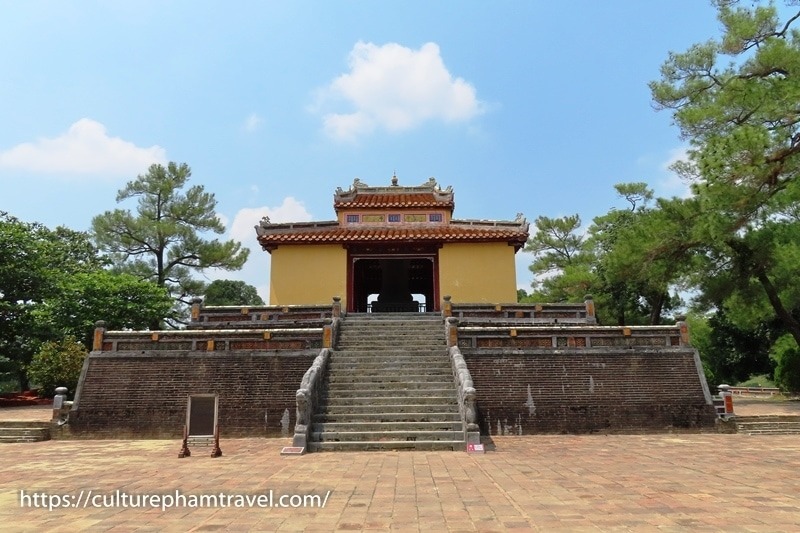
During the Minh Mang period, there were many wars to seize territory in Cambodia, it made the treasury completely used up. By the time of Tu Duc, all aspects of the country were deteriorating. From the 1850s, a group of intellectuals Vietnamese, typically Nguyen Truong To, recognized the country’s stagnation and demanded Western learning to develop industry – trade, military – foreign reform.
However, most of the Nguyen dynasty officials and scholars were unaware of the need for reform and opening up the country, so Tu Duc did not determine to implement these proposals. Dai Nam gradually became stagnant, backward and in danger of invasion by European colonists.
The second period (1858 – 1945).

It was the period of the French invasion and domination since the French attacked Danang and ended after the abdication of Bao DaiEmperor.
In August 1858, the French Navy amphibious attack on the port of Da Nang and then moved to invade Gia Dinh. June 1862, Tu Duc Emperor signed a treaty to cede the three eastern provinces to French.
In 1867, French occupied the next three western provinces to form a colonial territory Cochinchine. After consolidating a firm position in Cochinchina. From 1873 to 1886, the French conquered the rest of Vietnam through the wars in Tonkin. In the end, in 1884, the Nguyen Dynasty officially recognized the right of French rule over Vietnam.
The French got the right to rule the country, while the Nguyen emperors retained the throne but were only like puppets, the French army could arbitrarily set up the Nguyen emperors. This period ended when Bao Dai announced his abdication in 1945.
The Nguyen dynasty’s Culture Heritages and Symbols
The Nguyen Dynasty has left a lot of cultural heritages for the Vietnamese people. Some of these have been recognized by UNESCO as world heritage such as Hue Imperial Court Music, Hue Monuments Complex, or Nguyen dynasty’s Woodblocks. Vietnamese history professor Phan Huy Le remarked that: “There has never been a period of history that left the Vietnamese people with three cultural heritages recognized and honored by the world with values of global significance so.
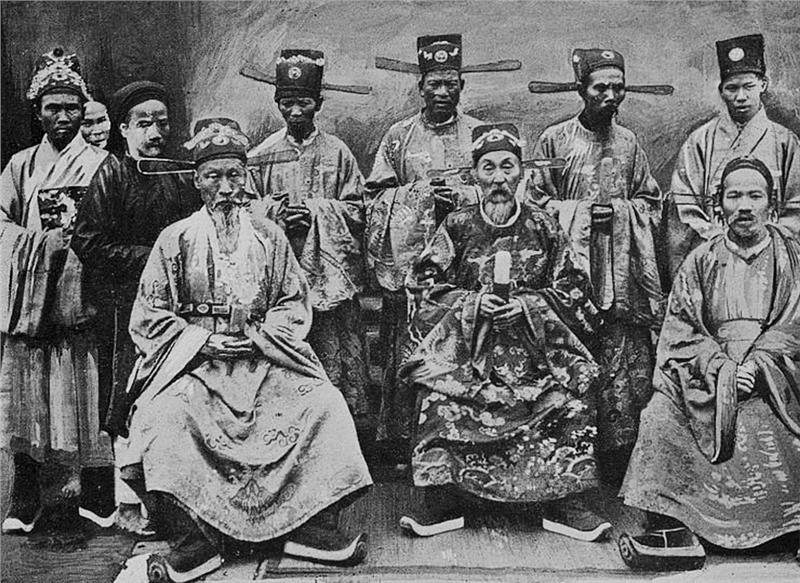
The Nguyen Dynasty also left a huge system of bibliographies in the Nguyễn Dynasty; educational system, thousands of communal houses, temples, churches … stretching from the South to the North of Vietnam… Many of these legacies have long been forgotten and regarded as a “remnant of the rotten dynasty”. Hue royal court music was recognized by UNESCO as an intangible cultural heritage of humanity in 2003.
The complex of Hue Monuments of the Nguyen dynasty.
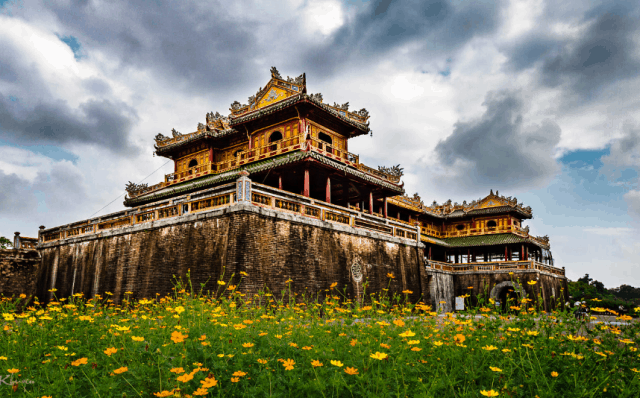
The Complex of Hue Monuments is recognized by UNESCO as a World Cultural Heritage on December 11, 1993. Most of these relics are now under the management of the Hue Monuments Conservation Center.
In the history of Vietnam in modern times, the construction of Hue Citadel is probably the largest, the largest scale with thousands of people taking part in the construction. Millions of cubic meters of rock and soil, with a giant’s workloads such as dug trenches; river filling; emigration; relocation of tombs; embankment. Lasted from the time of conducting the survey under the Gia Long emperor in 1803 until the completion of the Minh Mang emperor’s reign in 1832.
The style of architecture and the layout make Hue Imperial City really a great and fortified fortress ever in Vietnam. A French captain, Le Rey, when coming to Hue in 1819 had to say: ” Hue imperial citadel is indeed the most beautiful, symmetric fortress in Indochina; even compared to Fort William in Calcutta and Saint Georges in Madras by the British.
The Nguyen Dynasty Flags:


Source: Wikipedia Nguyễn dynasty
The dynasty royal seals
Nguyen Dynasty Lineage
Because under the 4th emperor Tu Duc, when he was young, he had smallpox so he could not give birth. So he adopted 3 nephews of the brother to be sons and lately they all became emperors.
Nguyen Dynasty royal crown
To understand more about the Nguyen dynasty and local culture, customs in Vietnam, you should book the Hue City Tour – Private Tour Full Day or the Hue City Group Tour at Culture Pham Travel.
Read more: Hue Tours and Things to do

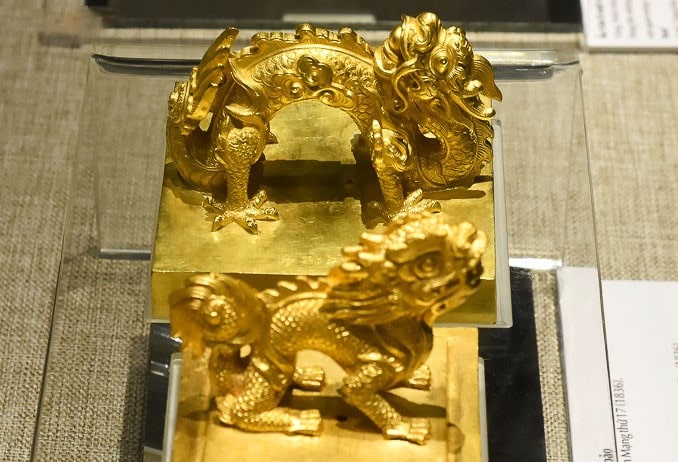

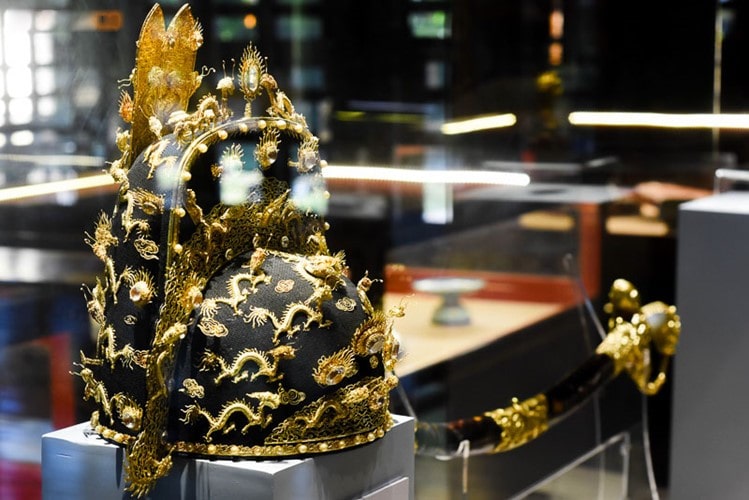
Comments
Post a Comment